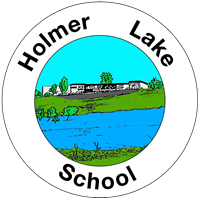Year 6 Statutory Assessment Tests
SATs papers are the statutory tests taken by primary school children to test their knowledge of the National Curriculum, as well as monitor the school’s progress as a whole. Children sit these test when they are in Year 2 and Year 6, the final year of primary school.
SATs are taken during the summer school term, generally in May of each year.
Why does my child have to take SATs papers?
SATs are taken to provide information about your child’s progress, in comparison to children of the same age, on a national basis.
The results are used to verify that schools are teaching their pupils the key skills in core subjects at these early stages, thereby ensuring that every child is given the tools they need to be successful throughout their education.
However, the government is keen to stress that SATs are not qualifications, and don’t affect your child’s future option at school.
What do SATs papers test my child on?
Your child’s SATs test their grasp of basic English and mathematics.
The English tests focus on grammar, spelling, punctuation and comprehension, whilst mathematics questions test arithmetic and reasoning.
In year 6, they will sit six papers, three for reading, spelling grammar and punctuation and three for mathematics; arithmetic and reasoning. Writing is assessed separately.
English grammar, punctuation and spelling
English reading
Mathematics
Around the same time, they may also be randomly selected to undergo a science sampling test, although the results of this will simply be used for national data and will not be returned to pupils or used in school performance tables.
What do my child’s SATs results mean?
2016 was the first year that SATs results were given in scaled scores rather than levels, as was previously the case. Your child’s raw results (i.e., the number of marks they actually achieved) will be converted into a scaled result, where a score of 100 means that they are working at the expected standard.
The numbers below show an example of the ‘raw scores’ your child would need, to reach the 100 scaled score level in each subject area needed for their age group.
The numbers below show an example of the ‘raw scores’ your child would need, to reach the 100 scaled score level in each subject area needed for their age group.
Year 6 SATs results
English grammar, punctuation and spelling: 43 out of 70
English reading: 21 out of 50
Mathematics: 60 out of 110
A score below 100 indicated that your child has met the expected standard in each test, whilst a scaled score of 99 or less means they haven’t. The maximum possible score is 120, and the minimum in 80.
In this age group, papers are marked externally, without the input of a familiar teacher, so their results are based entirely on their exam schools.
They may also be given an alphabetic code, which translates as follows:
AS: the expected standard has been achieved
NS: the expected standard has not been achieved
A: your child was absent from one or more of the test papers
B: your child is working below the level assessed by KS2 SATs
M: your child missed the test
T: your child is working at the level of the tests but is unable to access them (for instance, if they have special educational needs)
How can I prepare my child for their SATs?
- Ensure that they get enough sleep - remove electronics and TVs from bedrooms
- Support with homework
- Promote being successful at school as a a way of preparing for a successful career in the future.


